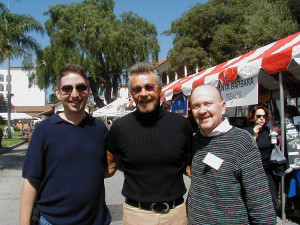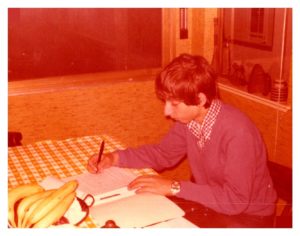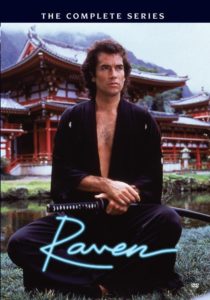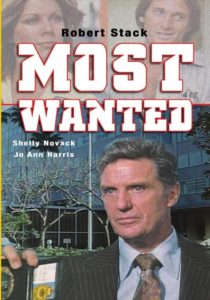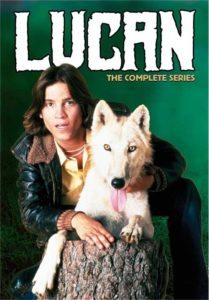I love TV and I have a secret addiction (okay, not so secret if you are reading this blog) to TV reference books and books about individual, often obscure TV shows. Here are reviews of two recent books that fit the bill.
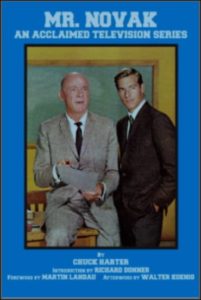 MR. NOVAK: An Acclaimed Television Series by Chuck Harter (Bear Manor Media) Chuck Harter’s MR. NOVAK is a terrific book on the making of a short-lived, little-known (because it’s hardly been rerun), but widely-acclaimed (in its time) TV series that starred James Franciscus as a teacher and Dean Jagger as his principal. MR. NOVAK followed the successful DR. KILDARE template, a series made by the same studio and developed by E. Jack Neuman, the writer/creator of this series, and it was undoubtedly an inspiration for the much-more sucessful ROOM 222, which came along years later. Harter’s book benefits enormously from his extensive research and numerous interviews with the key players of the show, both behind the camera and in front of it (some interviews were conducted personally, others gleaned from press reports and other sources). In many ways, MR. NOVAK is a story of opportunity lost — the series was a critical and popular hit in its first season, but then was sabotaged by financial and creative studio and network meddling in the second season, which included a misguided change in the writing and the loss of key cast members. You don’t have to be a fan of MR. NOVAK to enjoy this book — in fact, I’ve never seen a single frame of the program. But I found the book fascinating anyway. The book comes with a detailed episode guide and two great bonus features — E. Jack Neuman’s “bible” for writers on the series and the synopsis of a two-part cross-over episode with DR. KILDARE about VD that was nixed at the last second by skittish NBC (the synopsis is inexplicably titled “a novelization” by Harter, which it most certainly is not). There are a lot of valuable lessons that current TV professionals — writers, producers, and executives — could learn from reading this detailed examination/appreciation/history/post-mortem of what could have been a landmark series in TV history if not for its death from self-inflicted wounds.
MR. NOVAK: An Acclaimed Television Series by Chuck Harter (Bear Manor Media) Chuck Harter’s MR. NOVAK is a terrific book on the making of a short-lived, little-known (because it’s hardly been rerun), but widely-acclaimed (in its time) TV series that starred James Franciscus as a teacher and Dean Jagger as his principal. MR. NOVAK followed the successful DR. KILDARE template, a series made by the same studio and developed by E. Jack Neuman, the writer/creator of this series, and it was undoubtedly an inspiration for the much-more sucessful ROOM 222, which came along years later. Harter’s book benefits enormously from his extensive research and numerous interviews with the key players of the show, both behind the camera and in front of it (some interviews were conducted personally, others gleaned from press reports and other sources). In many ways, MR. NOVAK is a story of opportunity lost — the series was a critical and popular hit in its first season, but then was sabotaged by financial and creative studio and network meddling in the second season, which included a misguided change in the writing and the loss of key cast members. You don’t have to be a fan of MR. NOVAK to enjoy this book — in fact, I’ve never seen a single frame of the program. But I found the book fascinating anyway. The book comes with a detailed episode guide and two great bonus features — E. Jack Neuman’s “bible” for writers on the series and the synopsis of a two-part cross-over episode with DR. KILDARE about VD that was nixed at the last second by skittish NBC (the synopsis is inexplicably titled “a novelization” by Harter, which it most certainly is not). There are a lot of valuable lessons that current TV professionals — writers, producers, and executives — could learn from reading this detailed examination/appreciation/history/post-mortem of what could have been a landmark series in TV history if not for its death from self-inflicted wounds.
Note: This is a minor quibble, but two errors jumped out at me. In discussing the post-NOVAK career of James Franciscus, Harter says that LONGSTREET ran for two seasons and that HUNTER, an episionage series co-starring Linda Evans, ran for 13 episodes on SyFy. In fact, LONGSTREET only ran for one season and HUNTER aired on CBS for eight episodes (13 were shot, five never aired) in 1977…decades before SyFy channel even existed.
 ARE YOU IN THE HOUSE ALONE? A TV Movie Compendium 1964-1999, Edited by Amanda Reyes (Headpress) This book is a lot of fun and wonderfully captures the cheesy delight of the 1970s TV movies (the “scary Zuni fetish doll” from the classic movie-of-the-week Trilogy of Terror is mentioned four times in just the first 16 pages of the book!).
ARE YOU IN THE HOUSE ALONE? A TV Movie Compendium 1964-1999, Edited by Amanda Reyes (Headpress) This book is a lot of fun and wonderfully captures the cheesy delight of the 1970s TV movies (the “scary Zuni fetish doll” from the classic movie-of-the-week Trilogy of Terror is mentioned four times in just the first 16 pages of the book!).
But the MOWs, as they were called, were more than just the TV equivalent of “grindhouse”/ “exploitation” movies. They were also a vivid reflection of our society at the time. Sadly, these often terrific movies are very hard to find, rarely showing up either on DVD or in syndication, and are very underappreciated. And that’s a shame, because as editor (and Made for TV Mayhem blogger) Amanda Reyes notes, “the seventies are considered the heyday of the made for television movie…the phenomenon of the television movie, while fairly well known, still struggles for recognition and remains one of the most overlooked mediums.” MOWs were also, as she observes, “a welcoming place for classic actors hoping to make a fast buck” and for “TV actors to break the mold of a long-running series in which they were often trapped.” Those of us of a certain age still remember the delight of seeing wholesome Andy Griffith become a baddie in the classic MOW Pray for the Wildcats or the spectacle of a faded big screen star like Bette Davis in the awful Madame Sin
Are You in the House Alone? is essentially a collection of hit-or-miss essays leading into a large section of reviews of some of the most memorable TV movies. The best essays are those focusing on the heyday of MOWs, the 1970s, and some of the thematic issues they tackled. The essays on “World War III in Television Movies” and “The Plight of the Small Screen Superhero” feel more like blogposts that the authors didn’t bother to flesh out for the book. And the section on mini-series (this is a book about TV movies, isn’t it?) and the TV films of Wes Craven read like filler.
Perhaps the best portion of this 338-page paperback is devoted to movie reviews, even if some of the choices are rather perplexing. I can see why Reyes included reviews of MOWs that were failed pilots for TV series (like Look What’s Happened to Rosemary’s Baby, Baffled, or Men of the Dragon), but I don’t get why include they also included a few that became series (like the MOW pilots for HAWAII FIVE-O, COLUMBO and HARRY O)? I would have preferred to see reviews of more obscure, unjustly forgotten MOWs. My other quibble with the reviews is that they all list the director and principal cast — but not the screenwriter. That strikes me as a major oversight (though, in some cases, the screenwriter was mentioned in the course of the review).
That said, this book was a giddy delight (a feeling clearly shared by many of the authors towards the movies), thought-provoking….and a welcome bit of nostalgia. It had the same effect on me as hearing Burt Bacharach’s ABC Movie of the Week theme has on Reyes… “it brings back more than just the movies…it brings back a time, a place and a moment when your television set turned into a bonafide movie theater and anything was possible.”
<iframe width=”560″ height=”315″ src=”https://www.youtube.com/embed/rM-Vkd7On2Q” frameborder=”0″ allow=”autoplay; encrypted-media” allowfullscreen></iframe>
